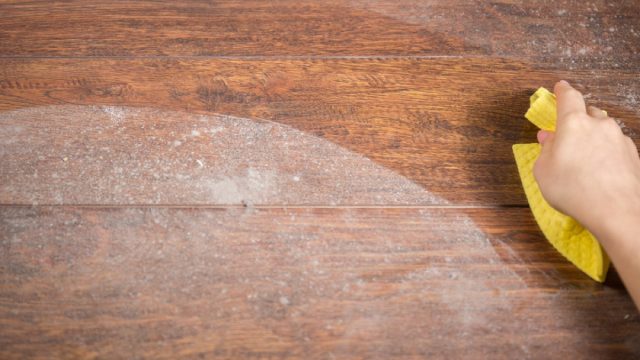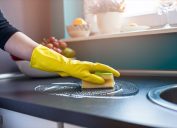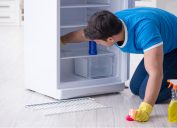This Is How Often You Should Dust Your Home
And why you shouldn't use a traditional duster

According to Bureau of Labor Statistics figures, the average American spends 110 minutes each day doing household maintenance, with much of that time dedicated to cleaning alone. However, while doing laundry or washing dishes may be part of your daily cleaning routine, there's one task that tends to be more of an afterthought when it comes to getting your household spic-and-span: dusting.
If you're allowing your household dusting to become a once-in-a-blue-moon activity, however, you might want to reconsider. According to one study published in the Proceedings of the Royal Society B, the composition of most household dust is significantly grosser than you might imagine, combining dead skin, fungi, and bacteria ranging from the benign to the potentially-harmful, including Staphylococcus aureus. Put simply, dust is a blight—and not just an aesthetic one. So, just how often should you break out the supplies and purge the stuff?
"We recommend dusting a home at least once per month for easy-to-reach areas and every three to six months for hard-to-reach areas such as ceilings, corners, door frames, and high shelves," says Jennifer Rodriguez, director of business development at Pro Housekeepers. "Going any longer may start to cause allergies or respiratory problems to those living in the home."
Instead of simply running a duster over your surfaces as you see fit, having a plan of attack will help you avoid simply redistributing dust throughout your home as you go. "In terms of approach, dusting from top to bottom, and making your way around the room in the same direction is the tried-and-tested method," says Sean Parry, founder of Neat, a high-end domestic cleaning company based in the United Kingdom.
And as for what tools to use, not all methods of dusting are created equal. "As dust settles, it begins to take on moisture from the air around it, and if it isn't removed, it then begins to stick to the surface it settled on initially. When this happens, using a damp cloth is usually the best approach," says Parry.
For dust that hasn't yet attached itself, research published in the Journal of Cultural Heritage reveals that vacuuming is the most effective means of removal, followed by a microfiber cloth. Those traditional dusters? While they may grab some of the residue on your surfaces, much of what they'll accomplish is simply moving what you've wiped off of one surface onto another. And for more easy ways to get your home spotless, check out these 20 Genius House-Cleaning Tricks That Will Blow Your Mind.
To discover more amazing secrets about living your best life, click here to follow us on Instagram!





















